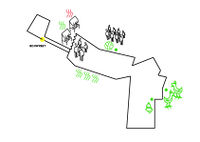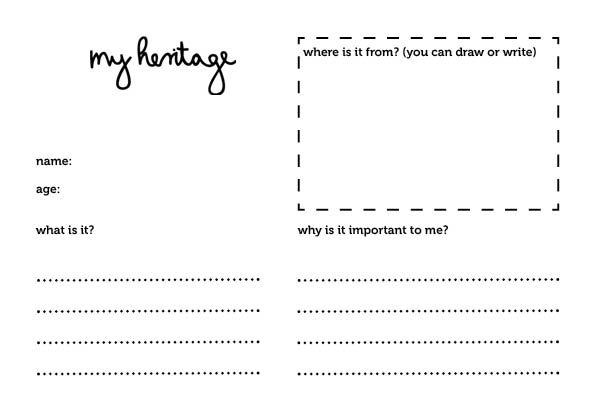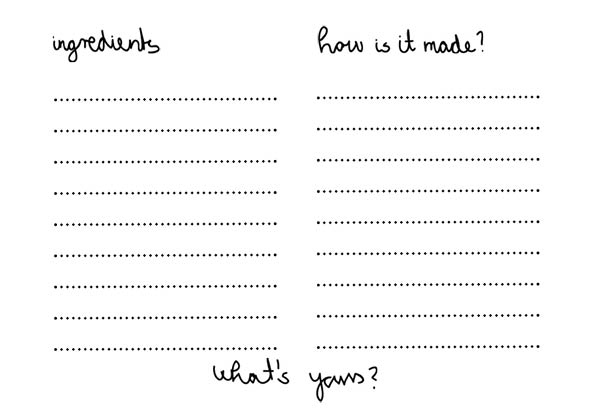Difference between revisions of "Anna"
| (26 intermediate revisions by the same user not shown) | |||
| Line 14: | Line 14: | ||
The first thing to do is to make an emotional map, about the area - mark those places during my trip, what is nice, beautiful or exciting, unusual (green) bad, make me feel uncomfortable, or even sad (red). | The first thing to do is to make an emotional map, about the area - mark those places during my trip, what is nice, beautiful or exciting, unusual (green) bad, make me feel uncomfortable, or even sad (red). | ||
Usually, the smells of the area was the most interesting for me, there were bad, and good and something which reminded me for some old memories. I think this was the most memorable and useful information about my trip around the neighborhood, so this might be a first step forward in the research. :) As I am a foreigner in this city, my most important basic needs in a new place is safety and feel myself at home, | Usually, the smells of the area was the most interesting for me, there were bad, and good and something which reminded me for some old memories. I think this was the most memorable and useful information about my trip around the neighborhood, so this might be a first step forward in the research. :) As I am a foreigner in this city, my most important basic needs in a new place is safety and feel myself at home. | ||
I | This feeling can be even a smell or a taste, or even some kind of food, which brings you back home, even just for a second. | ||
What is the | This is what I am looking for - what kind of food could bring back each people home? What cultures, what memories belongs to this specific food? | ||
How can I collect knowledge from this? | |||
==== The map ==== | |||
[[File:Emotional map-01.jpg|200px]] | |||
==== My confrontation piece==== | |||
My confrontation piece is about my own heritage, something which helps me to feel myself home again - my favorite sweets from my childhood. | |||
I just made a little card, what is it exactly, where is it from, and why do I like it and I also write down how is it made. | |||
So I offer this to people, and ask them, what is theirs? So I can get a little insight to their roots, their memories and even their skills - how this food can be made? | |||
If I collect these cards all together, I can make a little book about the areas taste - I can map a taste and some memories as well, and It could take a proper cookbook of the area. | |||
[[File:heritage.jpg|200p]] | |||
[[File:heritage2.jpg|200p]] | |||
==== The Cards ==== | |||
I made similar cards for the people I want to ask about their heritage. They can write down what is it about, where is it from - I even give the possibility to draw, or write - simple and more creative answers. And the rest is similar to my card: they can write down the ingredients, and how is it made, they could even add a little fun fact about the food. | |||
[[File:heritage_for_foreigners.jpg|200p]] | |||
[[File:heritage_for_foreigners2.jpg|200p]] | |||
====sharing knowledge==== | |||
Sharing knowledge is so easy since we are connected virtually. being connected and sharing things online has also its advantages and disadvantages as well. Online presence allow us to join a big community which doesn't know rich or poor people - you have the same access to education, culture, daily politics as everybody else. it makes this platform democratic and equal. But this has a dark side as well. | |||
Charles Leadbeater says in his book 'We think' that we are what we share. It can make our lives easier or maybe worse, so we have to be cautious about the content. Also If we are talking about design, many would think this kind of freedom isn't that good - what about free access to millions of songs, how is the artist respected? Or what about traditional forms of sharing knowledge - books, newspapers, magazines? And also, how can we trust the sources of information if they are edited by millions of people? | |||
But the author is about to reveal the positive side of this openness - how can we use this to be as creative as we can, and this book is the defence of sharing ideas. A good example is Wikipedia. Yet it's anarchy too - no one is in control, also democracy - there are votes what should be out, and also aristocracy - someone who's longer in the community has the higher position in it. maybe that's why its quality is questionable. on the other hand it may be more up to date, than Encyclopedia Britannica. But many cannot afford to compare the two- that's why Wikipedia is message, that the more we share the richer we get. However it is founded with a few staff, almost no money and it built up itself. | |||
But there is the classic thinking - what's the point about doing this, if I don't profit from it in the end? Even though, this century is about what we share/give away - that's what define ourselves. | |||
=== My future scenario === | |||
What if in 15 years communicating, sharing ideas, storytelling is going to transform? | |||
What if we won’t need words, sentences to communicate, only using non-verbal, visual language. Also the platforms gonna remain digital - sharing ideas, storytelling are purely based on platforms like Instagram, Twitter, Facebook. | |||
As my project is based upon the idea of gathering culinary heritage from people/children and share it/ preserve it in a unique way. | |||
What if we will have to use every single surface to communicate? even our tools will be communication devices. | |||
So in my project i suggest the idea of preserving the good, the bad, the weird, the horrible and even combination of these things. Using the kitchen tools as communication devices - the most important surface we have, are the kitchen textiles - towels, aprons. The design is finished by its users, therefore it's open, every finished design is unique. | |||
I used this as an opportunity to share, preserve, reuse. Creating a method which can be a working method in the neighborhood. Storytelling and triggering creativity. | |||
This can be easily created with the workshops of Bouwkeet - adults and kids also can easily learn how to create their own apron (without waste!) and after use it as a communicational platform. This also can be used as well in the workshops as well in the kitchen at home. | |||
Latest revision as of 01:29, 4 February 2017
Anna Török
Anna Török (14.09.1990. Szentes, Hungary) spendig my semester at WDKA on Fashion Design. Specialized in leather accessories (bags shoes) but have been experiencing with clothing design. I have been living in Budapest for 7 years, and now in Rotterdam.
Open Design
What is open design?
Open design is based on sharing knowledge, designing something together involving different experiences, therefore making a community. This allows free documentation, free editing and free distribution.
What do we make?
The basic theme is about to map the neighborhood in Delfshaven around the makerspace, called BouwKeet. The aim is to get in touch with this area's people, to create a tool to make them tell a story.
Research
The first thing to do is to make an emotional map, about the area - mark those places during my trip, what is nice, beautiful or exciting, unusual (green) bad, make me feel uncomfortable, or even sad (red).
Usually, the smells of the area was the most interesting for me, there were bad, and good and something which reminded me for some old memories. I think this was the most memorable and useful information about my trip around the neighborhood, so this might be a first step forward in the research. :) As I am a foreigner in this city, my most important basic needs in a new place is safety and feel myself at home. This feeling can be even a smell or a taste, or even some kind of food, which brings you back home, even just for a second. This is what I am looking for - what kind of food could bring back each people home? What cultures, what memories belongs to this specific food? How can I collect knowledge from this?
The map
My confrontation piece
My confrontation piece is about my own heritage, something which helps me to feel myself home again - my favorite sweets from my childhood.
I just made a little card, what is it exactly, where is it from, and why do I like it and I also write down how is it made.
So I offer this to people, and ask them, what is theirs? So I can get a little insight to their roots, their memories and even their skills - how this food can be made?
If I collect these cards all together, I can make a little book about the areas taste - I can map a taste and some memories as well, and It could take a proper cookbook of the area.
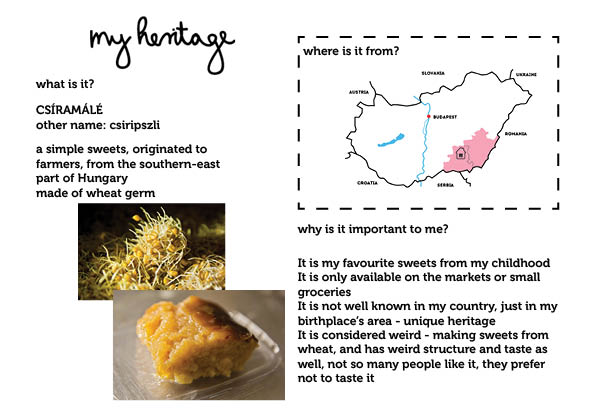
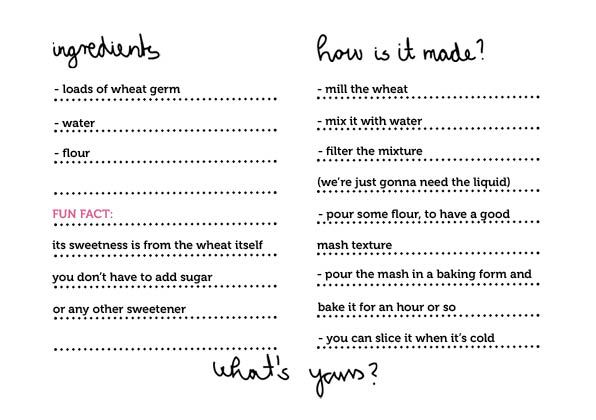
The Cards
I made similar cards for the people I want to ask about their heritage. They can write down what is it about, where is it from - I even give the possibility to draw, or write - simple and more creative answers. And the rest is similar to my card: they can write down the ingredients, and how is it made, they could even add a little fun fact about the food.
sharing knowledge
Sharing knowledge is so easy since we are connected virtually. being connected and sharing things online has also its advantages and disadvantages as well. Online presence allow us to join a big community which doesn't know rich or poor people - you have the same access to education, culture, daily politics as everybody else. it makes this platform democratic and equal. But this has a dark side as well. Charles Leadbeater says in his book 'We think' that we are what we share. It can make our lives easier or maybe worse, so we have to be cautious about the content. Also If we are talking about design, many would think this kind of freedom isn't that good - what about free access to millions of songs, how is the artist respected? Or what about traditional forms of sharing knowledge - books, newspapers, magazines? And also, how can we trust the sources of information if they are edited by millions of people? But the author is about to reveal the positive side of this openness - how can we use this to be as creative as we can, and this book is the defence of sharing ideas. A good example is Wikipedia. Yet it's anarchy too - no one is in control, also democracy - there are votes what should be out, and also aristocracy - someone who's longer in the community has the higher position in it. maybe that's why its quality is questionable. on the other hand it may be more up to date, than Encyclopedia Britannica. But many cannot afford to compare the two- that's why Wikipedia is message, that the more we share the richer we get. However it is founded with a few staff, almost no money and it built up itself. But there is the classic thinking - what's the point about doing this, if I don't profit from it in the end? Even though, this century is about what we share/give away - that's what define ourselves.
My future scenario
What if in 15 years communicating, sharing ideas, storytelling is going to transform? What if we won’t need words, sentences to communicate, only using non-verbal, visual language. Also the platforms gonna remain digital - sharing ideas, storytelling are purely based on platforms like Instagram, Twitter, Facebook. As my project is based upon the idea of gathering culinary heritage from people/children and share it/ preserve it in a unique way. What if we will have to use every single surface to communicate? even our tools will be communication devices. So in my project i suggest the idea of preserving the good, the bad, the weird, the horrible and even combination of these things. Using the kitchen tools as communication devices - the most important surface we have, are the kitchen textiles - towels, aprons. The design is finished by its users, therefore it's open, every finished design is unique. I used this as an opportunity to share, preserve, reuse. Creating a method which can be a working method in the neighborhood. Storytelling and triggering creativity. This can be easily created with the workshops of Bouwkeet - adults and kids also can easily learn how to create their own apron (without waste!) and after use it as a communicational platform. This also can be used as well in the workshops as well in the kitchen at home.
